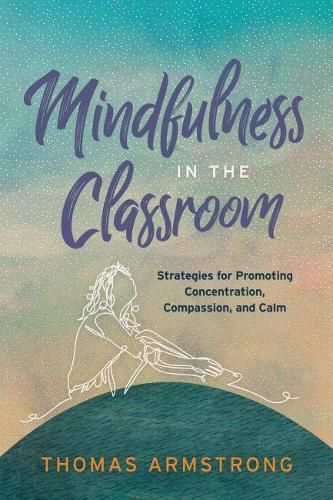Readings Newsletter
Become a Readings Member to make your shopping experience even easier.
Sign in or sign up for free!
You’re not far away from qualifying for FREE standard shipping within Australia
You’ve qualified for FREE standard shipping within Australia
The cart is loading…






In today’s schools, students and teachers feel unprecedented-even alarming-levels of stress. How can we create calmer classrooms in which students concentrate better and feel more positive about themselves and others? Author Thomas Armstrong offers a compelling answer in the form of mindfulness, a secular practice he defines as the intentional focus of one’s attention on the present moment in a nonjudgmental way.
In Mindfulness in the Classroom, Armstrong:
Explains how mindfulness affects the structure and function of the brain. Provides an overview of mindfulness as both a personal practice and a classroom methodology that aligns with such educational models as Social and Emotional Learning (SEL), Positive Behavioral Intervention and Supports (PBIS), and Universal Design for Learning (UDL). Shares and explains the extensive research that shows the positive effects of mindfulness practices in the classroom. Describes how to adapt mindfulness for different grade levels, integrate it into regular school subjects, and implement it schoolwide. Offers guidelines for teaching mindfulness responsibly, without religious overtones.
Dozens of observations from teachers, students, researchers, and practitioners provide striking evidence of the power of mindfulness and offer hope to anyone who wants to make classrooms more productive places of learning.
$9.00 standard shipping within Australia
FREE standard shipping within Australia for orders over $100.00
Express & International shipping calculated at checkout
In today’s schools, students and teachers feel unprecedented-even alarming-levels of stress. How can we create calmer classrooms in which students concentrate better and feel more positive about themselves and others? Author Thomas Armstrong offers a compelling answer in the form of mindfulness, a secular practice he defines as the intentional focus of one’s attention on the present moment in a nonjudgmental way.
In Mindfulness in the Classroom, Armstrong:
Explains how mindfulness affects the structure and function of the brain. Provides an overview of mindfulness as both a personal practice and a classroom methodology that aligns with such educational models as Social and Emotional Learning (SEL), Positive Behavioral Intervention and Supports (PBIS), and Universal Design for Learning (UDL). Shares and explains the extensive research that shows the positive effects of mindfulness practices in the classroom. Describes how to adapt mindfulness for different grade levels, integrate it into regular school subjects, and implement it schoolwide. Offers guidelines for teaching mindfulness responsibly, without religious overtones.
Dozens of observations from teachers, students, researchers, and practitioners provide striking evidence of the power of mindfulness and offer hope to anyone who wants to make classrooms more productive places of learning.